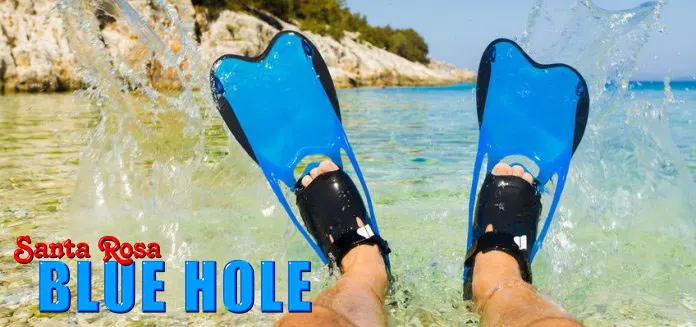Diving fins, also known as flippers, are used to move through the water quickly and flexibly. A fin consists of an open or closed pedestal and a shovel. The blade is firm in length and flexible in width. On the sides of the blade, there are vertical edges that not only ensure extra strength but the water does not slide along the side of the fin and therefore there is better propulsion. The best models also have rubber strips or channels (channels) that make the fins even more flexible. A good fin facilitates propulsion, without feeling stiff, but can quickly cause cramping.
Diving fins come in many shapes and sizes. Manufacturers sometimes talk about snorkeling fins but in reality, there are no differences between snorkeling fins or recreational diving. In principle, all the fins are suitable for snorkeling. On the contrary, some fins are not suitable for diving. These fins are often too light or short (or are simply cheap and bad fins). Personal preferences and determine which fin is the best. Read the article on the best fins for snorkeling.
The diving fin has an average length of between 55 and 75 cm. There are also shorter fins but they are more to take on vacation (they do not take up so much space in the suitcase). The size of the foot part determines the size of the fin. There is no difference between the left or right fin, you can put any on both feet.
The most common material is rubber. The most expensive fins can be made of fiberglass, carbon fiber, or a combination of both. The advantage of these materials is that they are lighter while still maintaining their rigidity. A softer material is often used for the interior of the footwear. For about 50 euros you can buy a good pair of rubber fins. The most professional fins (with more expensive materials) reach up to a few hundred euros.
Regulate Fins
Regulating fins do not have the sock part closed but are open at the back and have an adjustable strap. So to speak, the flap is wedged and the strap holds the foot in place. There are models with short or long footwear. In general, sizes from XS (extra small) to XL (extra large) are shown. It’s fine if your foot protrudes a little while the fin feels comfortable.
Regulating fins are the most used by divers. They are suitable for use with diving boots or booties and therefore are used for diving (and snorkeling) in cold water. Nowadays there are also open heel fins that are comfortable with barefoot that can be used in hotter water. Before buying diving fins, think about where you want to use them. If you want to use them with boots or booties, take them to try.
Straps for Diving Fins
An important component of the fins regulates is the straps. You want fins that hold their place but also that they release quickly. The simplest variant consists of an elastic rubber band that is placed behind the ankle. Some straps are adjustable with a buckle. There are several systems on the market with which you can release them with one click. In addition, there are the so-called spring straps in which the fin is held in place by means of a spring. Tip: Ask if you can request the straps separately since sometimes they tend to break.
Flaps
The foot flap is generally lighter and more flexible than the flap with an open heel. The feet are completely enclosed on a pedestal. Footwear fins are worn barefoot or with special socks (neoprene). In terms of size, you can keep your shoe number (it is advisable to try the shoe fins too).
The easiest way to put foot flaps is first to put the back edge down (backward) and then put your foot on the fin. Then put the edge back up. The fins should not squeeze because this can cause cramping during diving or snorkeling. The fin should be comfortable when standing and when you lift your heel. You can eventually do that while with the other foot on the shovel.
Alternatives: Split Fins
Frequently there are new innovations of diving fins. For example, there are the fins “split fins”, where the blade consists of two parts. This allows the water to come down easily and the fin strike costs less energy. There are also fins with split blades that have a hinge integrated into the blade. Generally, these types of innovations add little but some people trust that. They are personal preferences then.
We recommend the following diving fins from Amazon:

